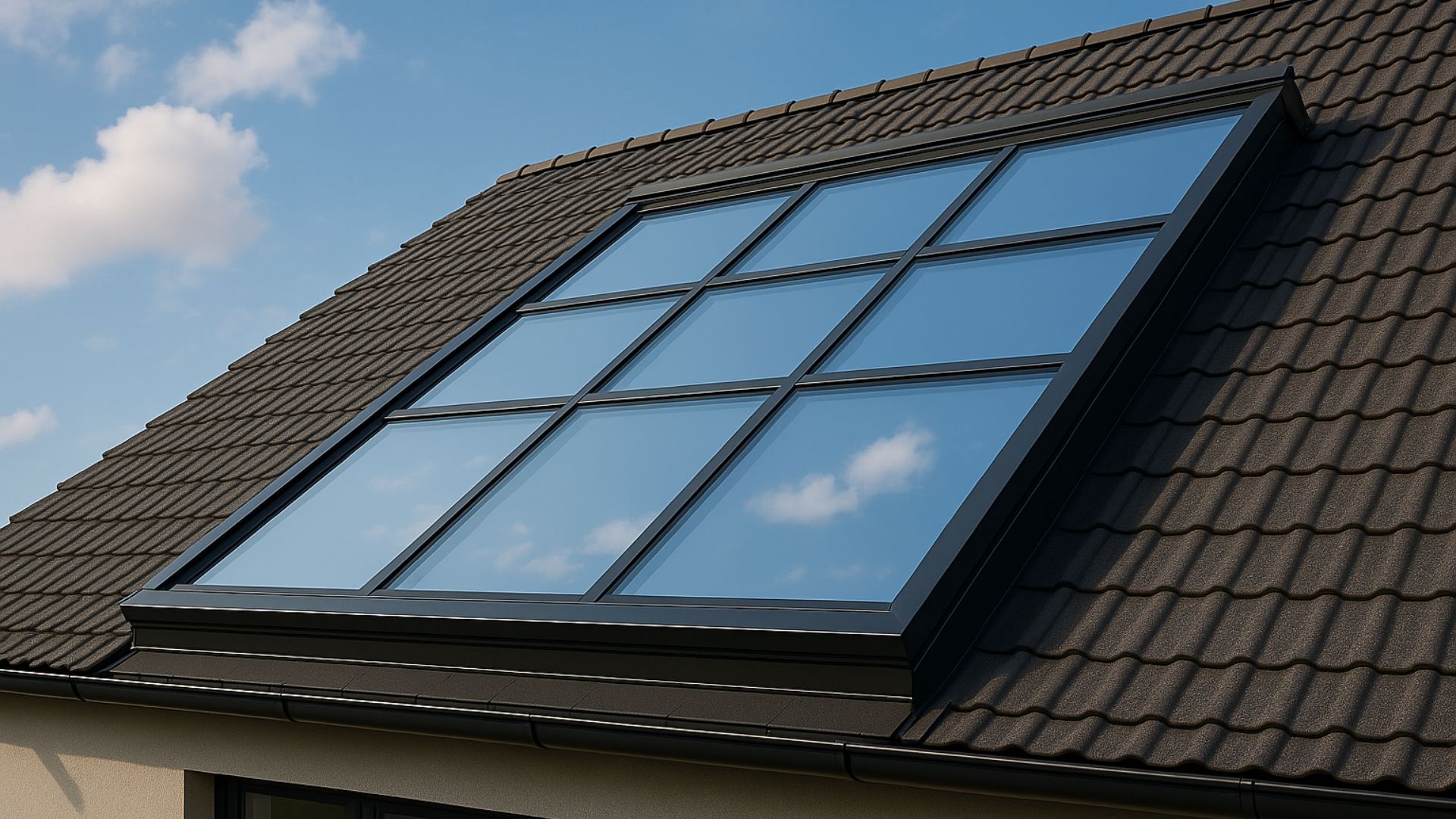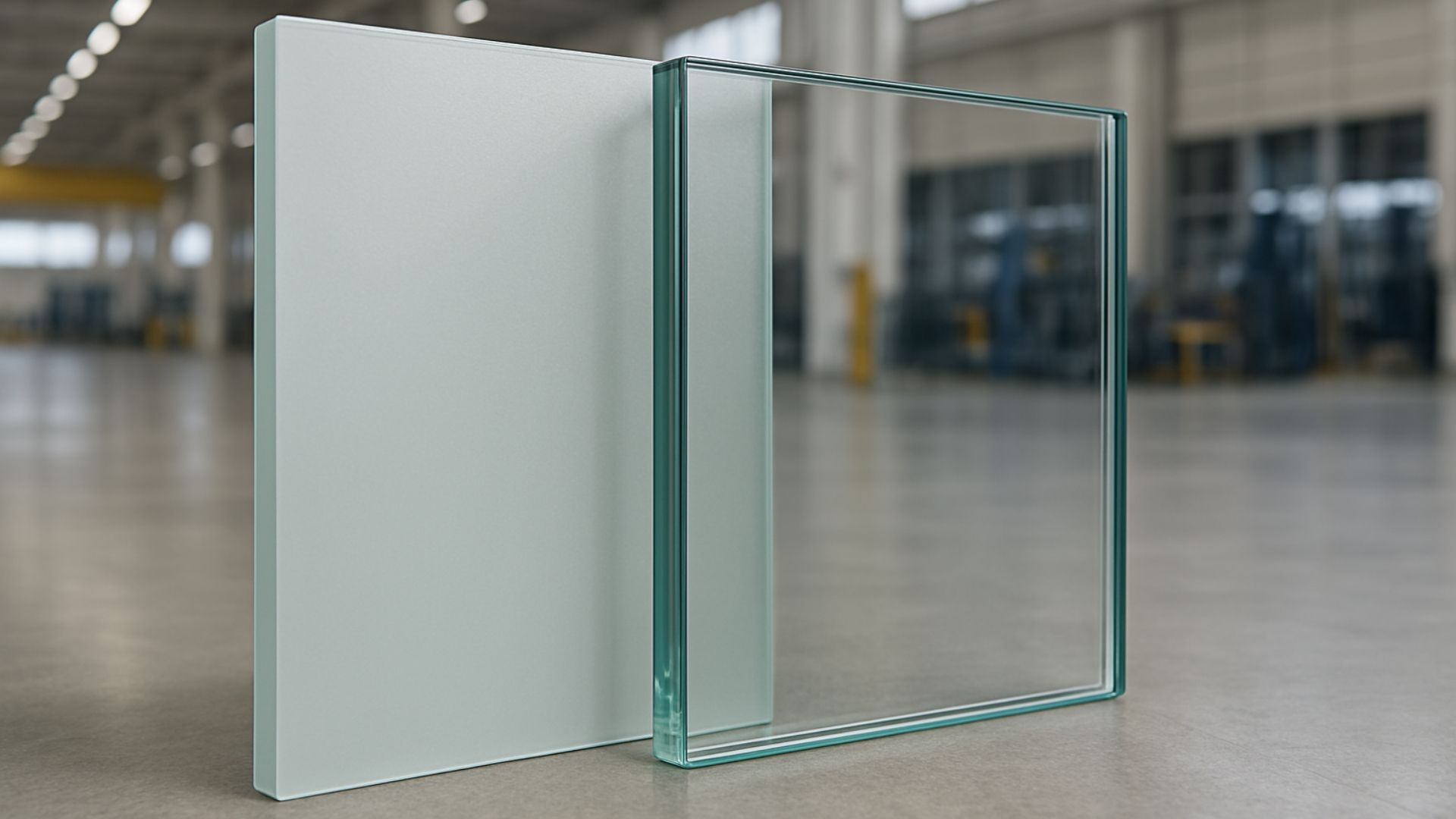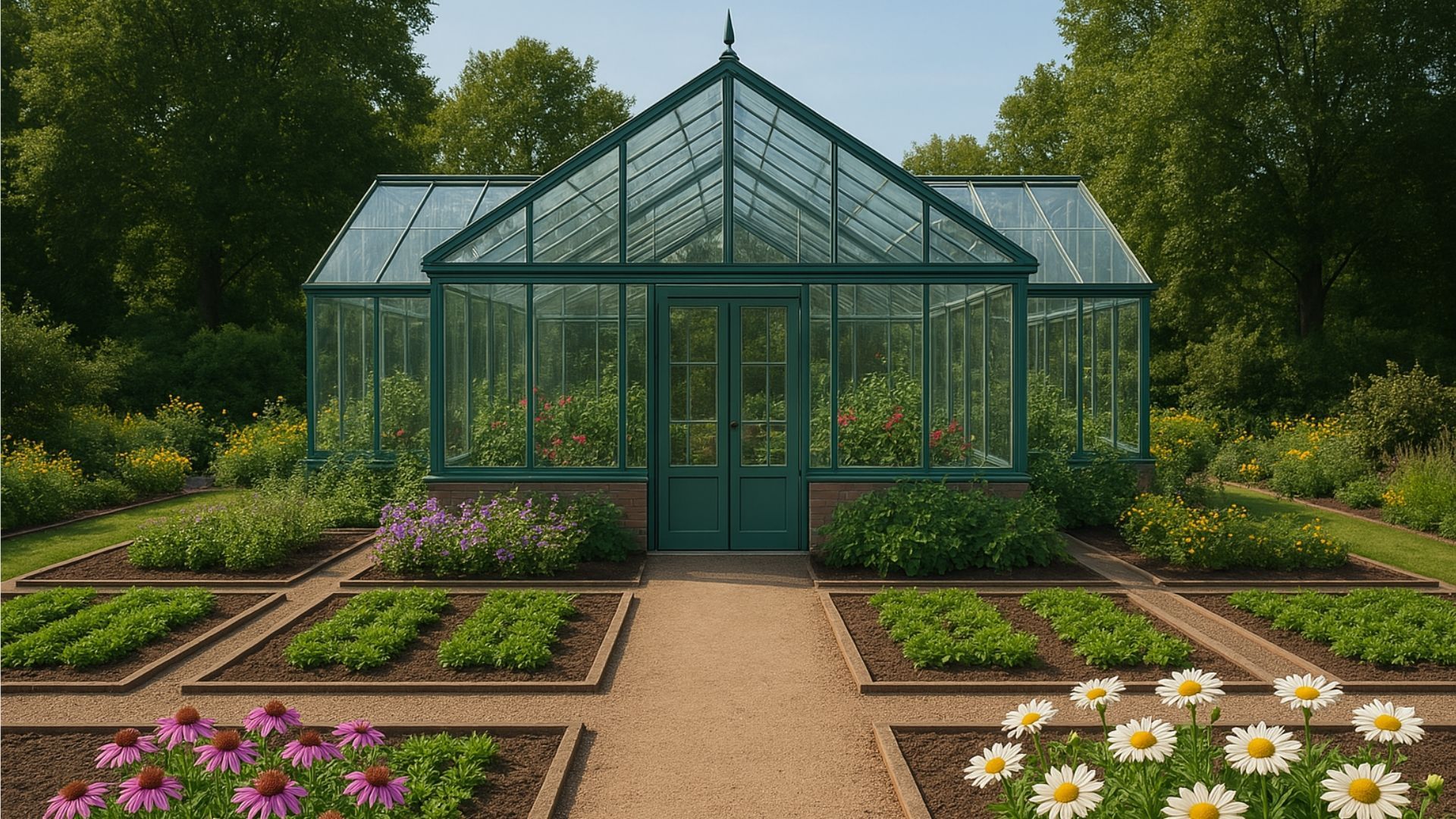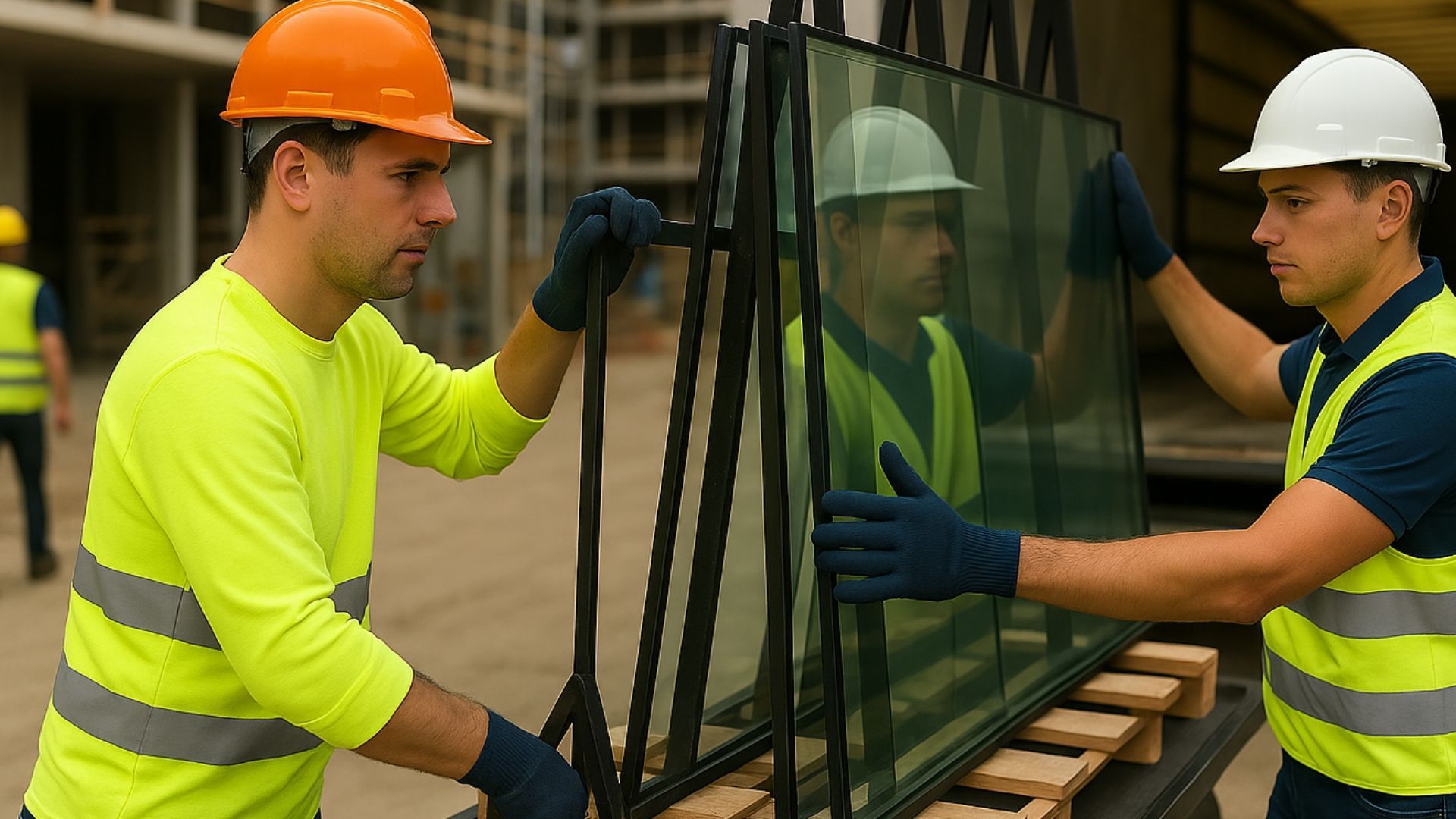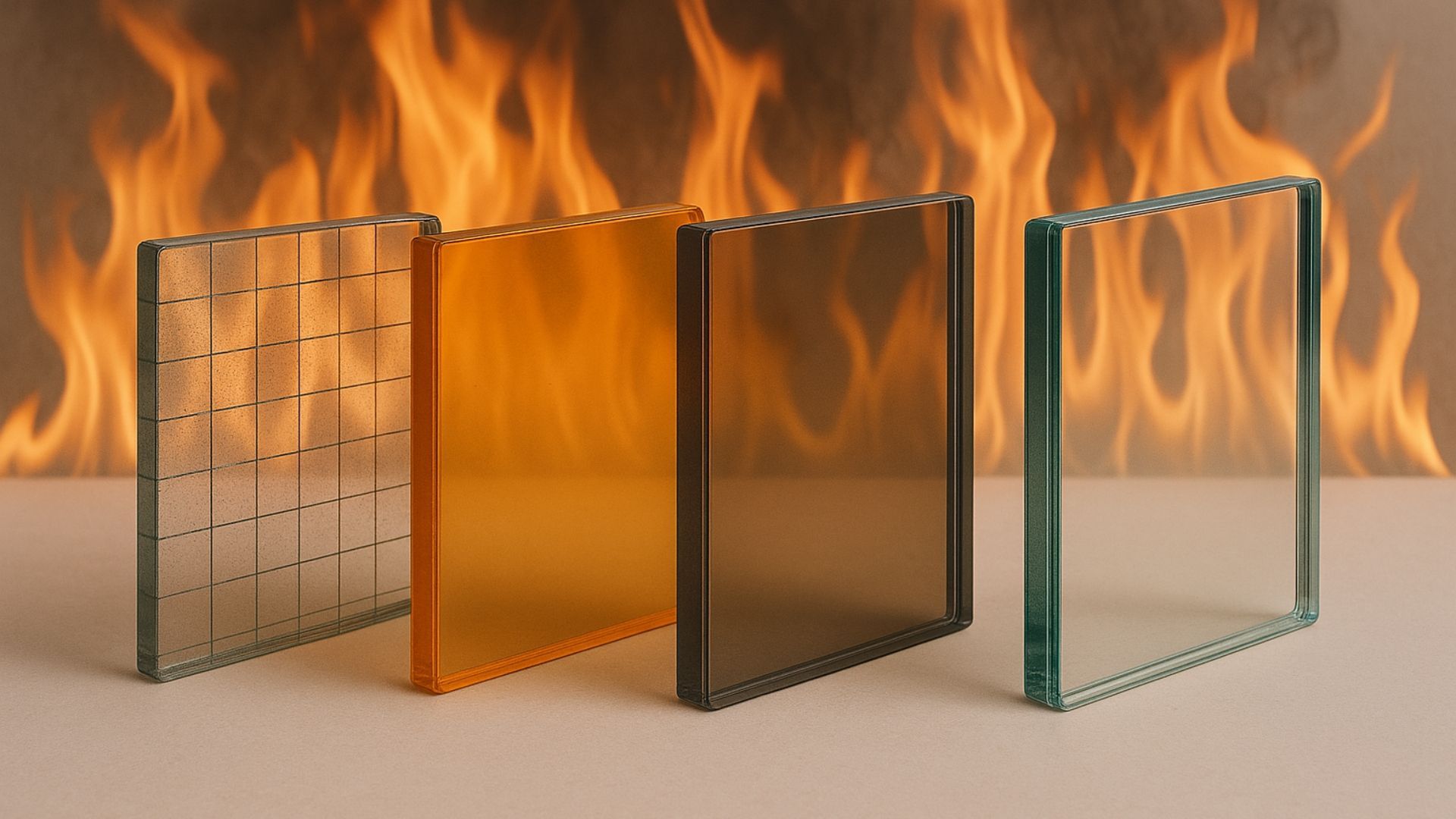Glass in biophilic architecture: a harmony of nature and design
Share this blog:
Biophilic building design aims to bring people and nature closer together. Find out how glass plays its part.
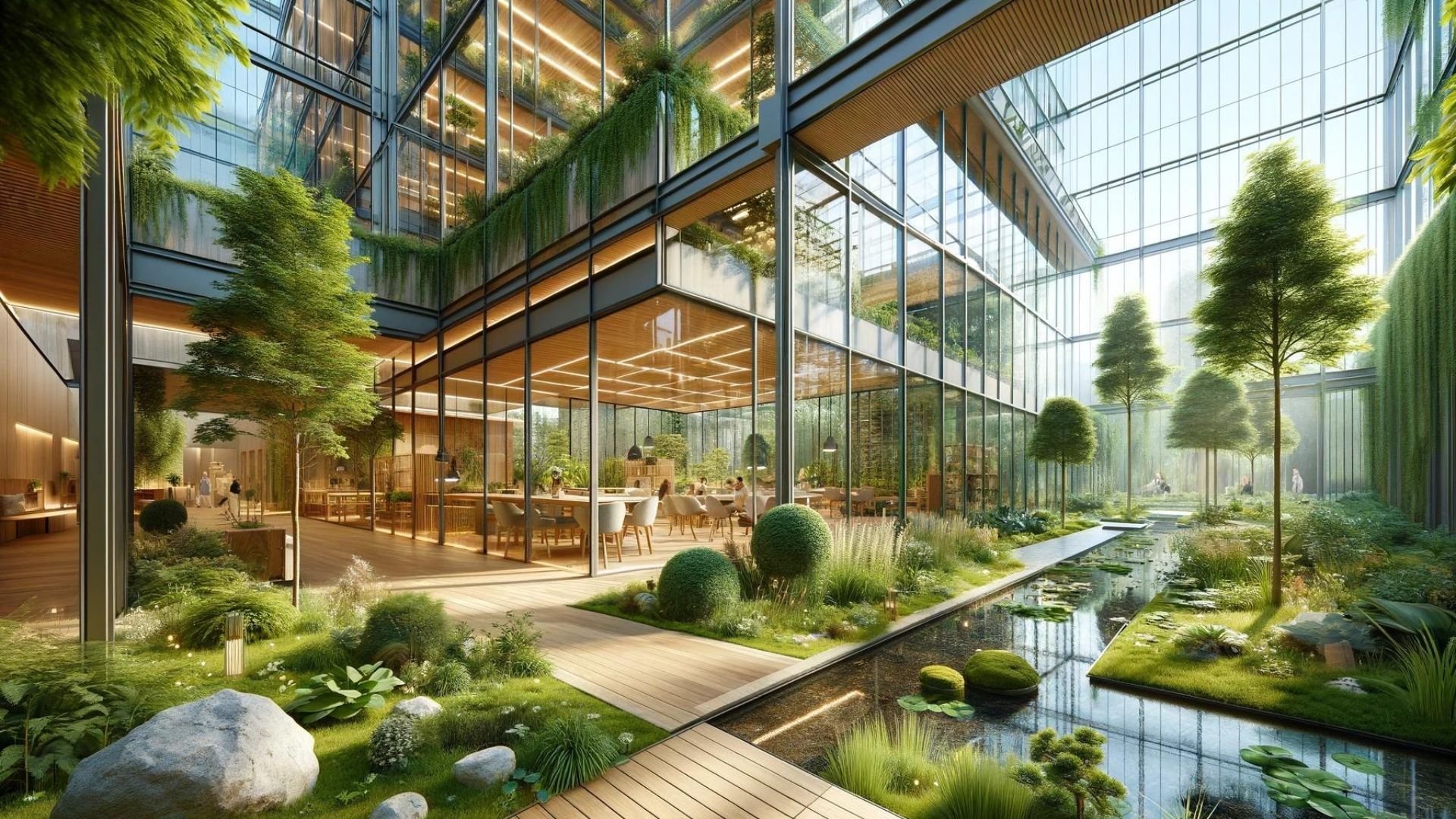
For as long as there have been buildings, architects have been looking for ways to bring occupants closer to nature. Today, the concept is known as "biophilic design" – but it's at least as old as the Hanging Gardens of Babylon.
Biophilic design is a broad concept that covers everything from lighting to ventilation, from building materials to wildlife. At its core is the belief that architecture can reconnect people to the environment.
It also shares with green architecture a commitment to sustainability. Buildings, it's argued, should be built from sustainable materials as part of a broader eco-friendly agenda.
Biophilic architecture uses plenty of materials. But in our opinion, there's one material that is indispensable: glass.
Yes, glass is the perfect material for biophilic buildings. Here are six reasons why.
1. It lets in the light
This almost sounds like a tautology – like saying that broccoli is good because you can eat it. Surely transparency is just a property of glass, not an advantage?
In fact, the transparency of glass is part of what makes it so ideal for biophilic designs. This is partly because natural light is central to the biophilic approach.
Natural light, it's argued, not only blurs the boundary between a building's occupant and the great outdoors. It's also good for us, improving our sleep, well-being and even productivity.
Biophilic buildings often prioritise indoor wildlife – something that glass makes possible by letting the light come flooding in.
Letting in the light can be as simple as including large windows or as complex as roof glazing, glass staircases or other more elaborate forms of structural glazing. In all these applications, the purpose is the same: to let the light in and bring occupants closer to nature.
2. It brings the outdoors in
One of the most inventive kinds of biophilic designs is the glasshouse. Glasshouses come in all shapes and sizes but have one thing in common: they bring the outdoors in.
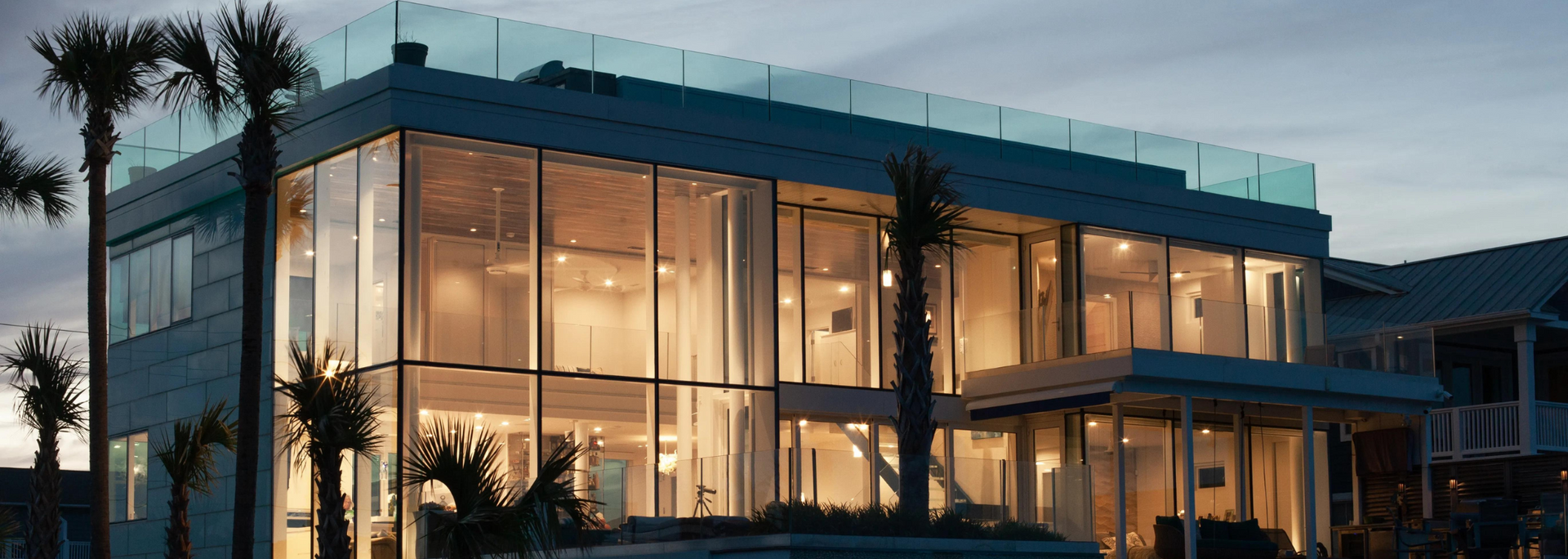
Whether we're talking about a garden conservatory or a stand-alone construction, glasshouses provide a bridge between the manmade interior and natural exterior.
And it's not just glasshouses – bay windows, wall-length doors and roof lights can also let the outdoors come flooding in.
This can, biophiles argue, foster a deeper connection with nature – especially in conjunction with indoor wildlife. Looking up and seeing nature is good for the soul, whether at home, at work or in a public space.
3. It's beautiful
The word "biophilia" comes from the Greek words
bio, meaning life, and
philia, meaning "love of". In other words, biophilic architecture is a type of architecture that expresses a love for life and living things.
To do this, it needs to be beautiful. Type "biophilic design" into Google Images and you're met with a smorgasbord of natural greens and browns. Of roominess and cosiness. Of elegant textures and shapes.
We're not going to claim that glass is the fairest material of them all – but it would be hard to argue that it doesn't add beauty to a building.
4. It can bring us closer to water
Central to biophilia is the notion that people in buildings should have direct access to nature. It's simple enough to incorporate flora and fauna – but how about water?
One way to do so is with glass aquariums and fish tanks. These have long added aesthetic appeal to interiors – but as part of biophilic design, they can put us closer in touch with nature, too.
5. It can be used to represent nature
Biophilic architecture places great importance on direct access to nature. But it also accommodates indirect access. This could mean using natural materials, earth tones, shapes found in nature, or weathered effects.
It can also mean the inclusion of representations of nature: paintings, photos, sculptures, murals and more.
Glass can play its part here, too, in the form of digitally printed panels. You can "bake" a design into glass using ceramic inks – and the design will last as long as the glass itself. The technology is such that these designs can be photorealistic.
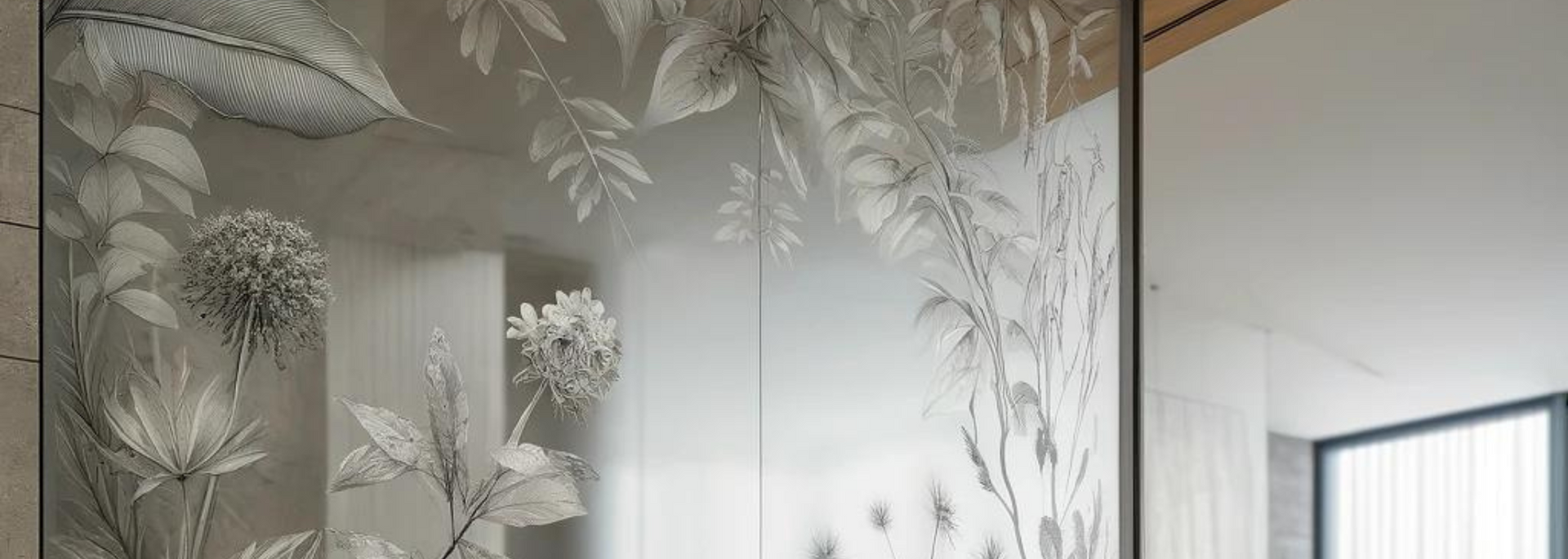
Digitally printed glass can be used in all sorts of settings. But a digitally printed image from nature can help bring about the harmony of nature and design that biophilia is all about.
6. It's environmentally friendly
Glass isn't just durable and aesthetically appealing – it's also one of the most environmentally friendly materials going.
This is partly because float glass is 100% recyclable – no landfill required. But toughened and double-glazed glass is also excellent at keeping the heat out in summer and in during the winter.
Biophilic architecture isn't the same as green design – but they have in common a desire to reduce emissions and employ sustainable building practices.
Can biophilic design improve our well-being?
Some say that biophilic design can improve the well-being of building occupants. For instance,
research has shown that a biophilic space can reduce mental health issues, chronic pain and blood pressure.
Similarly, some researchers argue that the use of glass in architecture can improve mental health by bringing people into closer and more frequent contact with natural light.
We're not in a position to say whether any of this research is definitive – but it's hard to argue with the idea that biophilic design and structural glazing make for pleasant, calming environments.
Conclusion
Biophilic design puts nature front and centre. It seeks to bring people back in touch with nature through architectural practices and decisions.
Entire buildings have been constructed according to these principles – but you can also see them at work in small-scale design features and architectural choices.
It's hard to imagine biophilia without glass. Glass, after all, is a material that maximises the effects of natural light while being sustainable, beautiful and versatile.
ToughGlaze is one of the UK's most trusted
suppliers of toughened glass,
laminated glass and
decorative glass products. We work with architects and contractors around the world, processing and delivering high-quality products from our state-of-the-art UK facility. Want to discuss procurement for your project?
Get in touch with our experts today.


